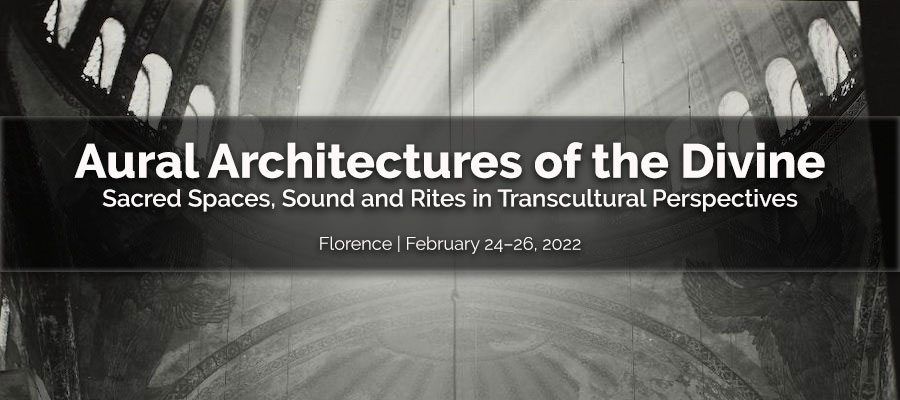Aural Architectures of the Divine: Sacred Spaces, Sound and Rites in Transcultural Perspectives, Florence, February 24–26, 2022
An interdisciplinary conference to be held in Florence in February 2022 will focus on the complex interrelation of sacred space, sound and rites in transcultural perspectives from ancient to premodern times. The research project “CANTORIA – Music and Sacred Architecture” (University of Mainz) and the “Dipartimento di Storia, Archeologia, Geografia, Arte e Spettacolo” (University of Florence) invite all interested researchers to submit proposals.
Since ancient times, religious practices and the perception of the divine have been determined by the intersection of rite, sound and sacred space. Temples, churches and other sacred buildings not only define a holy place as a physical and symbolic expression of a specific faith, but establish the setting for performative and multisensorial religious ceremonies in which music and other sonic manifestations play an important role. The structure, decoration and furnishing of sacred buildings create specific acoustics which influence the soundscape of sacred spaces, consisting of chants, music of rites or art music, prayers, recitations and religious sonic utterances. Performative rites such as services, processions, sacred plays or other liturgical ceremonies use the potentials of these environments in specific ways. Vice versa, architecture reacts to ritual and musical developments by modifying venerable sanctuaries or in designing and constructing new buildings. In addition to established architectural-, music- and religious-historical methods and new trends of anthropology and sound studies, digital technologies contribute to the understanding of the architecture-sound nexus in producing virtual and aural spaces. Through acoustic measurements and digital reconstructions of ancient monuments archaeoacoustics help to explore aural architectures of times past.
In this decidedly interdisciplinary conference we focus on the complex interrelation of sacred space, sound and rites in transcultural perspectives from ancient to premodern times. The sacred space is understood as a historical product, which was determined by a religion’s theological, aesthetic and socio-cultural context and which – conversely – shaped the performative, sonic and aesthetic dimensions of the ritual activities. Guiding questions could be: Were sacred architectures intentionally designed to create specific spiritual soundscapes? Did architecture theory discuss acoustics considering spoken and sung word or instrumental music in sanctuaries? What are religious concepts of sound and space as manifestations of the metaphysical? To what extent did composers and performers react to the architectural and acoustic situation in sacred spaces? Were artistic decorations conceived to interact with the ritual, musical and sonic elements? How were the multisensorial performances experienced and perceived by the faithful? In what ways do aural architectures of different religions, historical or geographical settings differ or coincide? And finally: To what extent can digital technologies provide new insights into the spatial-sonic experiences of divine ceremonies of the past?
The interdisciplinary conference is aimed at scholars of architectural and art history, musicology, (archaeo-)acoustic and sound studies, religious studies, archaeology, anthropology and sensual culture studies. With its wide methodological ambitus and the broad historical and geo-cultural and religious outlook the conference seeks to provide a multifaceted investigation of the interconnection of rite, sound and sacred architecture in a transcultural perspective. The conference is organised by the research project “CANTORIA – Music and Sacred Architecture” (Johannes Gutenberg University Mainz) in cooperation with the Università degli Studi di Firenze, Dipartimento SAGAS.
Papers of 30 minutes will be accepted in English and Italian. Contributions by junior researchers will receive special attention.
